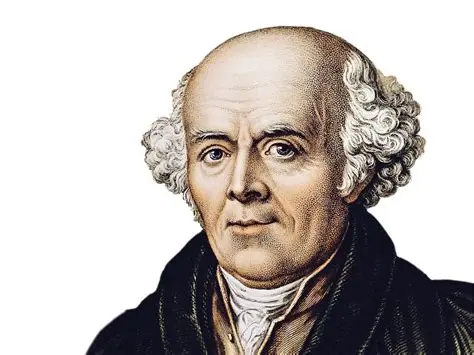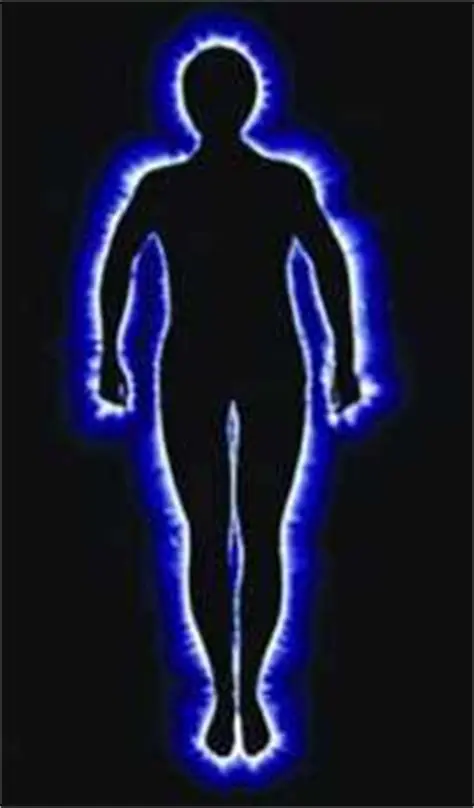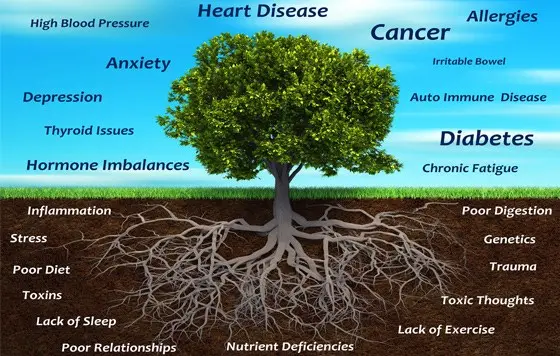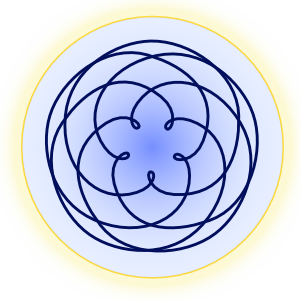The Power to Heal: Homeopathy
How is homeopathy so effective and why is it slandered by pharmaceutical companies and attacked by conventional medicine? Homeopathy is still deemed as a “pseudoscience” by conventional scientists, because the physicalists have not understood how does it function and its principles are not promising profits for the pharmaceutical industry. Offering individual approach and reaching the causes of illnesses without side-effects – it is a therapy of the future.
Published on May 27, 2021
Homeopathy is a natural form of medicine used by tens of millions of people worldwide to treat both acute and chronic conditions. The holistic nature of homeopathy means that each person is treated as a unique individual with the aim of stimulating their own natural healing ability. Person’s physical state, emotions and mind are all considered in the management and prevention of disease.
Homeopathy is based on the principle of similia similibus curantur or “like cures like”. In other words, a substance taken in miniscule or non-observable amounts will cure the same symptoms it causes if taken in larger amounts. The basic tenet is that homeopathic remedies are acting not on the organism, but dealing with causes of organic diseases. Homeopathy treats patient’s whole system and the causes of illness, it does not treat just the symptoms.
Roots of homeopathy
 The main principles of homeopathy have been around for a long time and
have been applied in different circumstances. Hippocrates of Kos (around
460-377 BC), who is in modern times considered the “Father of
Medicine”, did work with principles, which are similar to how homeopathy
works. He thought that symptoms unique and specific to an individual
should be taken into account before making a diagnosis. Hippocratic
medicine was humble and passive. The therapeutic approach was based on
“the healing power of nature” (vis medicatrix naturae in
Latin). According to this doctrine, the body contains within itself the
power to re-balance and heal itself. Hippocratic therapy focused on
simply easing this natural process. Hippocrates also observed
empirically that through the similar the disease develops and
through use of the similar the disease is healed. So that which causes
urinary tenesmus in the healthy, cures it in disease. Coughing is
provoked and healed through the same agent in exactly the same way as in
the case of urinary tenesmus.1
The main principles of homeopathy have been around for a long time and
have been applied in different circumstances. Hippocrates of Kos (around
460-377 BC), who is in modern times considered the “Father of
Medicine”, did work with principles, which are similar to how homeopathy
works. He thought that symptoms unique and specific to an individual
should be taken into account before making a diagnosis. Hippocratic
medicine was humble and passive. The therapeutic approach was based on
“the healing power of nature” (vis medicatrix naturae in
Latin). According to this doctrine, the body contains within itself the
power to re-balance and heal itself. Hippocratic therapy focused on
simply easing this natural process. Hippocrates also observed
empirically that through the similar the disease develops and
through use of the similar the disease is healed. So that which causes
urinary tenesmus in the healthy, cures it in disease. Coughing is
provoked and healed through the same agent in exactly the same way as in
the case of urinary tenesmus.1

Paracelsus aka Theophrastus Bombastus von Hohenheim (1493–1542), the German naturalistic doctor and philosopher, was a more recent representative of this line of thought. He formulated the doctrine of signatures (“signa naturae”), according to which the therapeutic properties of plants or minerals can be deduced from some similarity between their forms or colours and various parts of the human body: sharply pointed leaves for stabbing pains, iris-like Euphrasia flowers for eye diseases, topaz to treat jaundice because both are yellow, and so on.2 Paracelsus is considered the one who developed spagyrics (in Greek “to separate and unite”), a process of alchemical origin that antecedes homeopathy. It differs from homeopathy just regarding the procedure – a potent plant with healing properties is in a special process (fermentation and distillation) burned to ashes and such ash is then added to the homeopathic distilled solution, which effectively amplifies the remedy’s curative effects.3
Although similar concepts existed previously, in modern times, homeopathic medicine was described by Dr Samuel Hahnemann (1755-1843), a German physician who was dissatisfied with the medical therapies and theories of his day.

Hahnemann considered the human being to be a biological unit animated by vital energy (‘Dynamis’) which when balanced, and therefore in a state of health, maintains a truly admirable harmony between all the components of the living organism which are involved in various functional and reactive activities. So Hahnemann’s idea of therapy was oriented toward the patient as a whole person rather than just to his illness, to the organism (the material instrument of life) and to disturbances of the Dynamis which animates it with sensitivity and will. In 1796 Hahnemann published an article which can be regarded to all intents and purposes as the birth certificate of modern homeopathy. In this work, Essay on a new principle for ascertaining the curative powers of drugs, and some examinations of the previous principles, the law of similars was first defined in a systematic way.4
How does homeopathy work – some hypothesis
In homeopathy, medicines are used at extremely low doses and also at ‘ultramolecular’ dilutions (high dilutions, HDs). This term describes those remedies in which the original substance is unlikely to be present. Main research on homeopathy nowadays has in fact focused on the study of HDs, aiming to understand whether and how they work and to draw attention to their possible biological action.5
The most widely credited hypothesis to explain the mechanism of action of homeopathic medicines relates to understanding whether and how water may be able to retain information. This theory is known as the ‘‘memory of water’’. Recent studies suggest that in appropriate circumstances, aqueous or hydroalcoholic solutions can memorise and transmit information about substances which have been progressively diluted in them.6 On the basis of several studies it can be affirmed that there exists a measurable difference between the chemical–physical parameters of water and those of ultradilute homeopathic solutions, even though these are chemically identical to water. These differences have been attributed to the formation of specific molecular ‘‘clusters’’ or ‘‘coherence domains’’ induced by dynamisation, which alter the molecular structure of the water itself.7 A number of studies on the effect of homeopathy have been published by the Homeopathy Research Institute8 and and the British Homeopathic Association.9
How does homeopathy work – hylozoik explanation
There are serious seekers, who want to understand deeper the reasons behind the efficiency of homeopathy and how does it really act. Hylozoik teaching, founded by philosopher Pythagoras and mediated in modern times by Swedish hylozoik thinker Henry T. Laurency, offers an explanation to clarify the issue.
The main thesis of hylozoics on homeopathy is that homeopathic remedies act on the etheric envelope and not on the organism.10 Homeopathic medicines have effect upon the etheric envelope, activating the corresponding etheric energies, thus indirectly the organism. Until the existence of the etheric envelope has been recognized, the dogmatic medical mentality will go on rejecting these medicines.11
 Etheric envelope is man’s physical energy body, consisting of matter, which is called etheric.12
It is a physical envelope, like organism, but consists of finer matter
than the coarsest physical matter (solid, liquid and gaseous), visible
to ordinary man. The etheric envelope consists of molecules, held
together electromagnetically, of the three etheric molecular kinds (life
ether, superether and subatomic ether), which are invisible to ordinary
man. The etheric envelope is the essential physical envelope, which is
explained by the fact that it contains all the energy centres that
control the organism. The organism is a robot, mainly directed by the
energies of the etheric envelope which largely have an automatic effect.
Without its etheric envelope the organism is deprived of any kind of
sense perception. Every cell of the organism is permeated and enclosed
by etheric matter, has its own etheric envelope, which is connected to
the network. The sense organs of the organism thus have their centers of
perception located in the etheric envelope. The etheric envelope exists
before the organism, which is constructed on the network of the etheric
envelope and with etheric energies. Without an etheric envelope no
organism can be formed. The quality and capability of functioning of the
organism depend on the etheric envelope.13
Etheric envelope is man’s physical energy body, consisting of matter, which is called etheric.12
It is a physical envelope, like organism, but consists of finer matter
than the coarsest physical matter (solid, liquid and gaseous), visible
to ordinary man. The etheric envelope consists of molecules, held
together electromagnetically, of the three etheric molecular kinds (life
ether, superether and subatomic ether), which are invisible to ordinary
man. The etheric envelope is the essential physical envelope, which is
explained by the fact that it contains all the energy centres that
control the organism. The organism is a robot, mainly directed by the
energies of the etheric envelope which largely have an automatic effect.
Without its etheric envelope the organism is deprived of any kind of
sense perception. Every cell of the organism is permeated and enclosed
by etheric matter, has its own etheric envelope, which is connected to
the network. The sense organs of the organism thus have their centers of
perception located in the etheric envelope. The etheric envelope exists
before the organism, which is constructed on the network of the etheric
envelope and with etheric energies. Without an etheric envelope no
organism can be formed. The quality and capability of functioning of the
organism depend on the etheric envelope.13
Besides the discovery of the etheric envelope it is also important discover the motion aspect of existence, the functioning of the energies and the energy resources of the various molecular kinds, a problem of which science knows nothing.14

So, how does homeopathy effect the etheric envelope and indirectly also the organism? E.g. a ponderable dose of arsenic acts on the organism. But an imponderable and chemically unobservable dose beginning with one millionth part of a gram, D6, has an effect on the etheric envelope. The higher the potency, the stronger the effect. Generally, higher potencies than that of one hundred thousand are not produced. Formerly, however, there were those who manufactured the million potency and asserted that its effect was the strongest one (very probable, since the higher vibrations or frequencies of the etheric envelope are inconceivable to us).15 Indian homeopathic doctor Jayesh Shah has highlighted that “every time you dilute a homeopathic remedy, it becomes stronger. Homeopathy is opposite to allopathy – there the dose is more powerful the more substance is in it. In homeopathy it is vice versa, the less substance is in it, the more powerful it is.” That is so, because homeopathy reaches to cure the causes of illness, not just the symptoms. And the causes mostly lie in the etheric envelope, not the organism. The etheric envelope can be affected by high dilutions of a particularly needed substance.
It is the business of medical science to discover the etheric envelope, the etheric energies, and the connecting link between the etheric envelope and the organism. As medical science appears irremediable in its dogmatic adherence to erroneous old views, it will take some time before these discoveries are made. Doctors refuse to listen to esotericians, and the masses follow science.16
In addition, esoteric therapy can be said to include homeopathy, light (colour), and sound therapy. All these methods are right in principle but are still at the experimental stage.
Usage of homeopathy
According to the World Health Organisation (WHO), heavy use of homeopathic treatments is common today in more than 80 countries. It is estimated that over 200 million people around the world use homeopathy17 and are patients to homeopathic doctors. Around 100 million of European Union citizens use homeopathic medicines in their day-to-day healthcare.18 It cannot just be an outcome of the so-called placebo effect, with which some scientists try to explain the effects of homeopathy, but this number shows that more and more people have found and are finding real help from homeopathic treatment. In addition, a recent scientific study has shown that homeopathic medicines, when prescribed during individualised treatment, are 1.5- to 2.0-times more likely to have a beneficial effect than placebo.19
According to a 2018 survey in France (population of 67 million), over 40% of French people have been using homeopathy for more than 10 years and 87% say their close family or friends have used homeopathy.20
In Germany (population of 82 million), a survey has shown that 56 percent of Germans already have experience with homeopathy and homeopathic medicines and use them mainly for everyday problems, both for themselves and others. Also, integrative medicine – the coexistence of conventional medicine and complementary therapies such as natural medicine and homeopathy – is advocated by 75 percent of Germans.21
In United Kingdom more than 400 general practitioners use homeopathy along with conventional medicine in their daily practice, and The Royal London Hospital for Integrated Medicine (RLHIM) is the largest public institution for integrated medicine in Europe, offering an approach to diagnosis and therapy based on both conventional and homeopathic medicine.
 In Switzerland, homeopathy and three other complementary therapies were
given the same status as conventional medicine in 2017 and homeopathy
is the most commonly used form of complementary medicine. SantéSuisse,
the biggest umbrella organization of health insurers in Switzerland
argues that standardized methods used to test conventional treatments
and its effectiveness cannot be applied to homeopathy as these
systematic and internationally accepted methods of biomedical science go
against the underlying principles of homeopathy.22
In Switzerland, homeopathy and three other complementary therapies were
given the same status as conventional medicine in 2017 and homeopathy
is the most commonly used form of complementary medicine. SantéSuisse,
the biggest umbrella organization of health insurers in Switzerland
argues that standardized methods used to test conventional treatments
and its effectiveness cannot be applied to homeopathy as these
systematic and internationally accepted methods of biomedical science go
against the underlying principles of homeopathy.22
Several countries around the world include homeopathy in their national health systems: United Kingdom, Brazil, Mexico, India, Pakistan, Sri Lanka etc. In Italy, Norway, Germany and Switzerland, homeopathy is very frequently chosen to treat paediatric patients. Even general practitioners often prescribe homeopathic remedies when conventional therapies prove relatively or completely ineffective.23 In several countries, e.g. Switzerland, Germany, Italy, Denmark, United Kingdom, Canada, United States and Australia, women, people of middle age and people with higher levels of education or higher income are more likely to use complementary medicine, including homeopathy.24
Why does conventional (allopathic) medicine oppose homeopathy so fiercely?
Allopathic medicine and the pharmaceutical industry are fiercely opposing the use of homeopathy in our civilization. Reasons for that can be the following:
Firstly, physicalism now still prevailing in science and conventional medical communities cannot simply understand and grasp homeopathy. Medical science rejects homeopathic remedies, since it cannot explain their efficacy. When, sometime in the future, it humiliates itself to explore the energy effect of the thousandth or millionth potency, it will make more revolutionary discoveries concerning the structure of matter than the physicists with their so-called splitting of atoms.25
Secondly, homeopathy is a principal threat to a now prevalent and powerful conventional pharmaceutical industry in the world. Especially with its main functioning principles, which are different from allopathic biomedical system:
- strictly individual approach towards patients’ whole being,
- reaching root causes of illness instead of dealing with symptoms of a disease and
- non-existence of harmful side-effects as in homeopathy medicines are used at extremely low doses and also as high dilutions of an original substance.

Side-effects is a particularly serious problem in allopathy, where synthetic drugs created for suppressing or alleviating certain symptoms create new symptoms (as so-called side-effects) in patients, creating a vicious circle of drug consumption especially for patients affected e.g. with chronic illnesses. If main functioning principles of homeopathy are someday accepted as superior for curing and treating patients, then it will deal a strong blow on the specific financial interests behind those allopathic pharmaceutical industries.
Thirdly, homeopathy is in the majority of cases efficient and cheap for patients. Several studies on evaluating the cost-effectiveness of homeopathy compared to conventional medicine have been conducted in France, Germany and Italy.26 Studies have showed lower costs for homeopathy27, or for similar costs better outcomes for those patients whose doctors also used homeopathic medicines.28
Though there has been a lot of attacks towards homeopathy in public sphere, informed patients make up their minds mostly based on the efficacy of a treatment. E.g. 68 percent of Germans find that counter-arguments in the field of homeopathy in the public sphere are patronizing, since everyone should decide for themselves what they believe. 42 percent think that the counter arguments are wrong, as they believe that you can see for yourself that homeopathic remedies work. In general, only 26 percent of Germans in the media perceive critical reporting on homeopathy to be of use.29
Conclusion
Homeopathy can be called a therapy of the future. Nowadays it is still on an experimental phase, but even as so it has shown its efficacy for tens of millions of patients worldwide. Science has not yet accepted homeopathy, but it is inevitable when science finally discovers the existence of etheric envelope and begins to comprehend the motion aspect of existence.
Etheric matter and its energies are the field of research extending immediately before science. More and more scientists will be aware of the etheric. This will become especially important to medical science. Most of the diseases afflicting the organism are preceded by disturbances of the etheric envelope. The exclusively organic diseases are few in number. Disease mostly is due to etheric and emotional imbalances, which both entail disturbances of the etheric envelope that with time manifest themselves pathologically in the organism.30
L.J. Boyd (1936) A Study of the Simile in Medicine (edizione italiana a cura di P. Bellavite: Il Simile in Medicina. Medicina Ippocratica, omeopatia e scienza, Ed. Cortina, Verona, 2001). Boericke and Tafel, Philadelphia ↩︎
Ibid ↩︎
Giulio Vigano, Paola Nannei, Paolo Bellavite “Homeopathy: from tradition to science?”, J Med Pers (2015) 13:7–17, pub 12.12.2014 ↩︎
Ibid ↩︎
Elia V, Napoli E, Germano R (2007) “The ‘memory of water’: an almost deciphered enigma. Dissipative structures in extremely dilute aqueous solutions.” Homeopathy 96:163–169 37. Also, Betti L, Trebbi G, Olioso D, Marzotto M, Bellavite P (2013) “Basic research in homeopathy and ultra-high dilutions: what progress is being made?” Homeopathy 102:151–154 ↩︎
Giulio Vigano, Paola Nannei, Paolo Bellavite “Homeopathy: from tradition to science?”, J Med Pers (2015) 13:7–17, pub 12.12.2014 ↩︎
Henry T. Laurency, The Knowledge of Life 3, Health, p 6 ↩︎
Henry T. Laurency, The Way of Man, The Physical Being of the First Self, p 15 ↩︎
Lars Adelskogh, Etheric Envelope, One, page 1 ↩︎
Henry T. Laurency, The Way of Man, The Physical Being of the First Self, pp 1-2 ↩︎
Ibid ↩︎
Ibid, p 15 ↩︎
Ibid, p 13 ↩︎
Homeopathic medicinal products. Commission report to the European Parliament and the Council on the application of Directives 92/73 and 92/74 ↩︎
Ibid ↩︎
Mathie et al. (2014) Randomised placebo-controlled trials of individualised homeopathic treatment: systematic review and meta-analysis. Systematic Reviews, 2014; 3: 142 ↩︎
Market survey by Ipsos, november 2018 ↩︎
Survey by Kantar TNS, august 2018 ↩︎
Why Alternative Therapies Are Not Covered by Health Insurance ↩︎
Ekins-Daukes S, Helms PJ, Taylor MW, Simpson CR, McLay JS (2005) Paediatric homoeopathy in general practice: where, when and why? Br J Clin Pharmacol 59:743–749 ↩︎
Frass M, Strassl RP, Friehs H, Müllner M, Kundi M, Kaye AD. Use and acceptance of complementary and alternative medicine among the general population and medical personnel: a systematic review. Ochsner J. 2012;12: 45–56 ↩︎
Lars Adelskogh, The Etheric Envelope, Four, page 21 ↩︎
E.g. Witt C, Keil T, Selim D, Roll S, Vance W, Wegscheider K, Willich SN (2005) Outcome and costs of homoeopathic and conventional treatment strategies: a comparative cohort study in patients with chronic disorders. Complement Ther Med 13:79–86;
Rossi E, Crudeli L, Endrizzi C, Garibaldi D (2009) Cost-benefit evaluation of homeopathic versus conventional therapy in respiratory diseases. Homeopathy 98:2–10;
Bornhoft G, Wolf U, Ammon K, Righetti M, Maxion-Bergemann S, Baumgartner S, Thurneysen AE, Matthiessen PF (2006) Effectiveness, safety and cost-effectiveness of homeopathy in general practice–summarized health technology assessment. Forsch Komplementarmed 13(Suppl 2):19–29 ↩︎
Colas et al., Economic impact of homeopathic practice in general medicine in France, Health Econ Review, 2015; 5: 18, 2015;
Rossi et al., Cost-benefit evaluation of homeopathic v conventional therapy in respiratory diseases Homp (2009) 98:2-10;
SASIS-Datenpool Jahresdaten mit Abzugsdatum 2015, SVKH ↩︎
Witt et al: Outcome and costs of homoeopathic and conventional treatment strategies: a comparative cohort study in patients with chronic disorders. Complement Ther Med. 2005 Jun;13(2):79-86 ↩︎
Survey by Kantar TNS, august 2018 ↩︎
Lars Adelskogh, The Etheric Envelope, One, p 6 ↩︎

